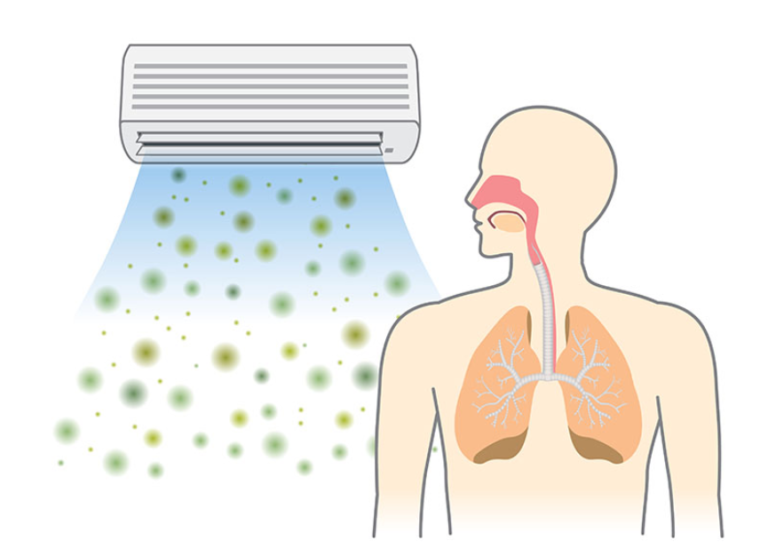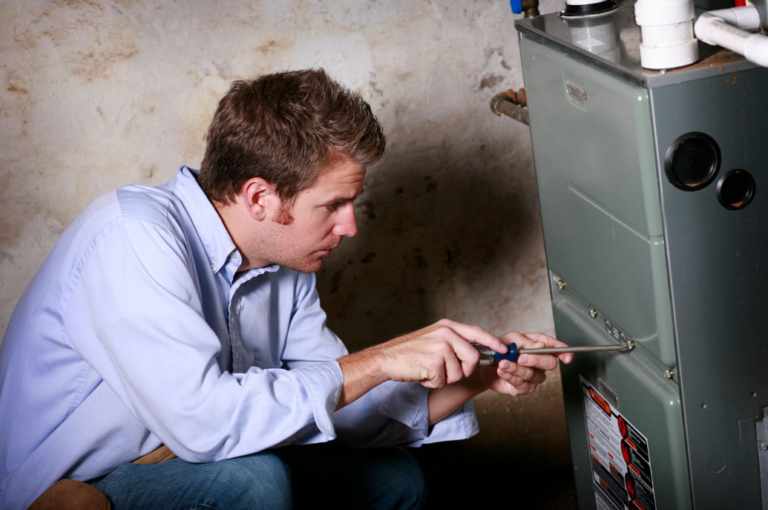What Is Ductless Air Conditioning? 5 Advantages
Ductless air conditioning is a type of air conditioning system that doesn’t require the use of ducts. Instead, it uses individual air handlers, also called indoor units (mini splits), to deliver cooled or heated air directly to the rooms in your home.
Ductless systems are a great option for homes that don’t have existing ductwork, or for rooms that are difficult to cool or heat with your current system. They’re also more energy-efficient than traditional ducted systems, since there’s no air loss through leaky ducts.
If you’re considering a ductless system for your home, read on to learn more about how they work and what to expect during installation.
What Is Ductless Air Conditioning

Ductless air conditioning (also called mini-split air conditioners or ductless AC) is a type of cooling system that doesn’t require the use of ductwork.
Unlike central air conditioners, which rely on a network of air ducts to distribute cool air throughout your home, ductless AC units consist of an outdoor compressor/condenser and one or more indoor air handlers.
Each indoor unit is connected to the outdoor unit by a small conduit that houses the power and refrigerant lines. The conduit is then sealed with caulk or foam to prevent air leakage.
Related post: 15 Most Common AC problems
What’s The Difference Between A Mini Split And A Ductless AC System?
There is not no difference between Mini Splits Systems and “Ductless AC System”. These two terms can be used interchangeably.
How Does Ductless Air Conditioning Work

Ductless air conditioning systems consist of an outdoor unit, called a condensing unit, and one or more indoor units, called air handlers. The outdoor unit is connected to the indoor units by a small conduit that houses the electrical wiring and refrigerant lines.
The outdoor unit contains the compressor, evaporator, and condenser coils.
The compressor pumps refrigerant through the system, and the evaporator coils (placed inside every indoor unit) absorb heat from the indoor air as it passes over them. The condenser coils then release the heat outside.
The indoor units are mounted on walls or ceilings and blow cooled or heated air directly into the room. Each indoor unit has its own thermostat, so you can control the temperature independently in each room.
Ductless Air Conditioning – Pros and Cons
Pros of ductless Air Conditioning:
1. Ductless air conditioners are energy efficient.
Ductless air conditioners are more energy efficient for two main reasons:
- First, because they don’t use ducts to distribute cool air, there’s no loss of cool air between the indoor and outdoor units.
- Second, because ductless air conditioners have an individualized cooling system for each room or area where they’re installed, you can better control the temperature in each space, which leads to less energy waste.
In addition, most ductless air conditioners come with a remote control, so you can easily adjust the temperature without having to get up and walk to the unit itself.
How Much Can You Save With a Ductless Air Conditioner?
The amount of money you can save with a ductless air conditioner depends on several factors, including the size of your home, the number of rooms or areas you want to cool, and the efficiency of the unit itself.
However, you can typically expect to save 20-40% on your energy bills with a ductless air conditioner compared to a traditional central air conditioner.
For example, if your monthly electric bill is $100 with a central AC unit, you could potentially bring it down to as low as $60 per month with a ductless AC unit. That’s a savings of $720 per year!
2. Ductless air conditioners are easy to install (Flexible Installation)
Ductless air conditioners can be installed quickly and easily, with no need for expensive and time-consuming ductwork. This makes them a great choice for homes that don’t have existing ductwork or for homeowners who want to avoid the hassle of installing it.
3. Ductless air conditioners provide targeted cooling.
Traditional air conditioners cool the entire house to the same temperature, while ductless air conditioners can be set to different temperatures in different rooms.
This allows you to cool only the rooms that you need to, which can save energy and money.
4. Easy to Use:
Ductless AC units come with remote controls that allow you to adjust the temperature from anywhere in your home. Some units even come with Wi-Fi capabilities, so you can control them using your smartphone or tablet.
5. Ductless air conditioners improve indoor air quality.
Ductwork can circulate dust, pollen, and other allergens throughout your home. Since ductless air conditioners don’t have ductwork, they can help improve your indoor air quality and reduce allergies and asthma symptoms.
Cons of ductless Air Conditioning:
1. Ductless ACs can be more expensive than traditional central ACs.
While the initial cost of a ductless AC unit may be cheaper than a traditional central AC unit, the cost of installation can be more expensive.
This is because ductless AC units require specialized knowledge and skills for installation. In addition, the cost of running a ductless AC unit can be higher than a traditional AC unit due to the need for regular maintenance and repairs.
2. Ductless ACs can be noisy.
While most ductless AC units produce less noise than traditional AC units, some people find the noise produced by ductless AC units to be bothersome. If you are sensitive to noise, you may want to consider another type of air conditioning system for your home.
3. Ductless ACs can cause condensation problems.
If not properly installed and maintained, ductless AC units can cause condensation problems in your home. This can lead to mold and mildew growth, which can be harmful to your health.
Ductless Air Conditioning – Maintenance
Like any other type of air conditioning system, ductless ACs require regular maintenance to keep them running properly.
Here are some tips for maintaining your ductless air conditioner:
1. Inspect the evaporator coils.
The evaporator coils are responsible for absorbing heat from the air inside your home. If these coils become dirty, they will not be able to function properly, and your AC system will have to work harder to cool your home. You should inspect the evaporator coils at least once a year and clean them if necessary.
2. Clean the condenser coils.
The condenser coils are responsible for releasing heat from the air inside your home. If these coils become dirty, they will not be able to function properly, and your AC system will have to work harder to cool your home. You should clean the condenser coils at least once a year.
3. Inspect the AC unit’s outdoor compressor.
The compressor is responsible for circulating refrigerant throughout the AC system. If the compressor becomes damaged, it can cause your AC system to break down completely. You should inspect the compressor every year, and have it serviced by a professional if necessary.
4. Have your ductless AC system serviced by a professional every year.
Even if you don’t think there’s anything wrong with your system, it’s always a good idea to have it checked out by a professional once a year. They will be able to spot any potential problems and fix them before they cause serious damage to your system.






